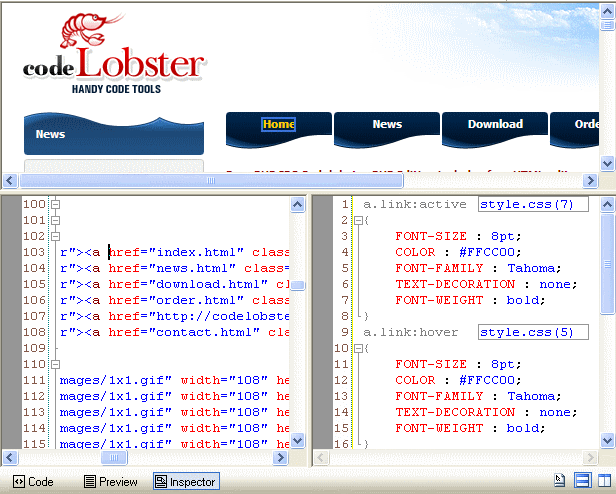

- ANDROID HTML INSPECTOR HOW TO
- ANDROID HTML INSPECTOR INSTALL
- ANDROID HTML INSPECTOR FULL
- ANDROID HTML INSPECTOR FOR ANDROID
On Android 4.2 and newer, go to Settings > About phone and tap Build number seven times to get a message that says “congratulations! you are now a developer”.On Android 4.0 and newer, it’s in Settings > Developer options.On Android 2.3, the option is under Settings > Applications > Development.Check the “USB debugging” checkbox in Developer Options. Next, you need to enable USB debugging on your device. Note that you can’t remotely debug Opera Mini from desktop, as the rendering is done on our Mini servers and only displayed on the device.
ANDROID HTML INSPECTOR FOR ANDROID
Preparing your deviceĮnsure that you have a USB cable available to connect your Android device to your computer (the USB power cable should be fine) and Opera for Android installed on it (see the Opera for Android user guide for installation help, if needed.) Keep the phone disconnected from your computer just for now.

Use Opera 15+, Google Chrome, Chromium, or the Yandex browser. You’ll need a Chromium-based desktop browser.
ANDROID HTML INSPECTOR INSTALL
Windows users may need to install Device drivers. If you choose something else, use that in the example steps below. The first thing you’ll need is the Android SDK - download it and then put the kettle on it’s a 400MB file.Įxtract the files to a memorable location, such as /Users/ your-user-name/adt or c:android/adt. You’ll be remotely debugging your phone from your desktop, so let’s get the desktop ready.
ANDROID HTML INSPECTOR HOW TO
Here’s how to connect Opera for Android to Chromium-based desktop browsers for remote debugging. Now that Opera for Android is out, you’ll sometimes need to debug it, as there are differences in Standards support between Opera and Chrome for Android and Chrome on Android 4+ (, etc,). See Get Started With Running JavaScript to get hands-on experience with running JavaScript in the Console.This article is outdated, please refer to: Introduction The Console is a good place to try out the function. For example, suppose you just learned about the built-in JavaScript Array method map(), and you want to experiment with it. You can use the Console to try out new code that's not related to the page. When you run JavaScript you don't have to interact with the page.
ANDROID HTML INSPECTOR FULL
See Console Utilities API Reference to see the full list of utility functions. Running debug(hideModal) pauses your code on the first line of hideModal the next time that it's called. For example, suppose that your JavaScript contains a function called hideModal. DevTools has a few convenience functions that make it easier to inspect a page. Modifying the page from the Console is possible because the Console has full access to the page's window. Using the Console to change the page's title. The Console panel next to the DevTools homepage.įigure 3. For example, Figure 2 shows the Console next to the DevTools homepage, and Figure 3 shows that same page after using the Console to change the page's title.įigure 2. You can run JavaScript in the Console to interact with the page that you're inspecting. The main difference between the methods is how they display the data that you're logging.

See the Console API Reference to browse the full list of console methods.

See Get Started With Logging Messages to get hands-on experience with logging.


 0 kommentar(er)
0 kommentar(er)
